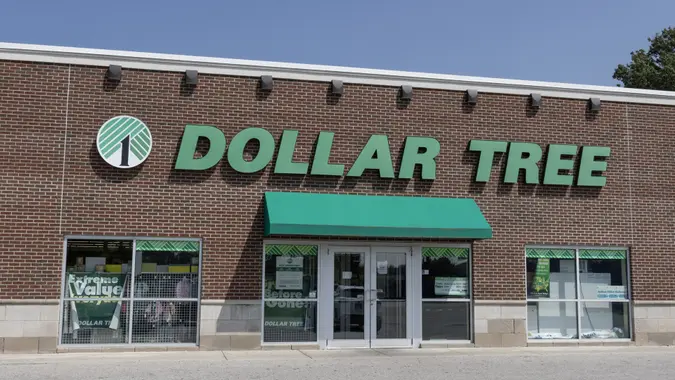I Asked ChatGPT What Trump’s Policies Could Do To Grocery Prices in 2026

Commitment to Our Readers
GOBankingRates' editorial team is committed to bringing you unbiased reviews and information. We use data-driven methodologies to evaluate financial products and services - our reviews and ratings are not influenced by advertisers. You can read more about our editorial guidelines and our products and services review methodology.

20 Years
Helping You Live Richer

Reviewed
by Experts

Trusted by
Millions of Readers
Anyone who’s gone to the grocery store this year has felt the sticker shock of higher food prices. While the exorbitant cost of eggs, for one, can’t all be attributed to President Donald Trump’s policies, if his administration keeps imposing and even adding on new tariffs, grocery prices could continue to climb.
To analyze the massive amount of information out there about tariffs and grocery prices, I turned to ChatGPT to get a snapshot of what Trump’s policies could do to grocery prices in 2026. Here’s what it said.
Tariff Aftershock in the Grocery Aisle
Though Trump’s 2025 tariff push had the most significant initial impact on big-ticket items like cars and steel, analysis from the Yale Budget Lab finds that broad tariffs have not only raised grocery costs now but could continue to do so into 2026.
Some grocery items that have had big spikes include walnuts, eggs, coffee and dairy, and the Bureau of Labor Statistics reports one of the fastest monthly grocery-price jumps in years. ChatGPT said this means that many families might begin feeling the impact of more cost increases in late 2025, with the ripple effects fully landing in 2026 as supply chains adjust to new costs.
Sticker Shock
Trump’s tariffs on Canadian and Mexican goods in particular have increased the cost of imported produce, packaged foods and ingredients used in processed meals, the AI pointed out.
These inflated costs may find some manufacturers cutting back on production and thus shipments, tightening supply or passing on higher freight costs. “This doubles down on inflation pressures,” ChatGPT said. Additionally, the consumer price index shows that overall inflation just jumped 2.9%, the highest jump this year.
Reduced Purchasing Power
All those tariffs add up. One estimate said that 2025’s tariff waves could push overall consumer prices up by 2.3%, shrinking consumer purchasing power by thousands of dollars per household.
This is a big deal in households where people are already feeling the pinch. ChatGPT said, “When food is already one of the most essential and non‐discretionary expenses, even a few months of elevated prices or supply disruption can make a serious dent in a household budget.”
What It Means for Your Grocery Budget in 2026
Here are a few realistic “if this happens, then you might see this” scenarios and what you can do about them:
- Best-case outcome: Tariffs stabilize or are partially rolled back, supply chain friction eases and 2026 sees only modest above-average grocery inflation (say 2% to 3%).
- Worst-case outcome: Trade wars escalate or retaliatory tariffs bite harder, producers cut back exports or face bottlenecks and 2026 grocery inflation spikes 5% to 8% (or more). That could cost a typical family hundreds of extra dollars per month, especially for staples like meat, dairy coffee and produce.
How To Prepare and Protect Your Grocery Budget
The best thing to do is prepare for price hikes. Thus, whether they come to pass or not, you’re in great financial shape. ChatGPT suggested:
- Shift grocery shopping to more stable sources. Shop for local items with shorter supply chains, which are less vulnerable to international disruptions. (Yes, this may require a little research).
- Stock up strategically when prices dip. Seek sales on nonperishable staples like canned goods, rice, or long-life pasta on sale and grab a little extra or shift your shopping to warehouse style stores.
- Use price-tracking apps and coupons. Comparison shopping and using cash back or digital coupons can soften the blow.
- Diversify where you shop. Combining big-box stores, discount grocers and local farmers’ markets can create a buffer against price spikes.
- Build a contingency food budget. If your “normal grocery bill” starts to look tight, carve out a 5% to 10% buffer in your monthly budget for unexpected food price inflation.
Planning ahead, watching prices and being flexible in where and how you buy food can go a long way toward keeping your grocery bills from becoming a surprise burden next year.
 Written by
Written by  Edited by
Edited by 


























